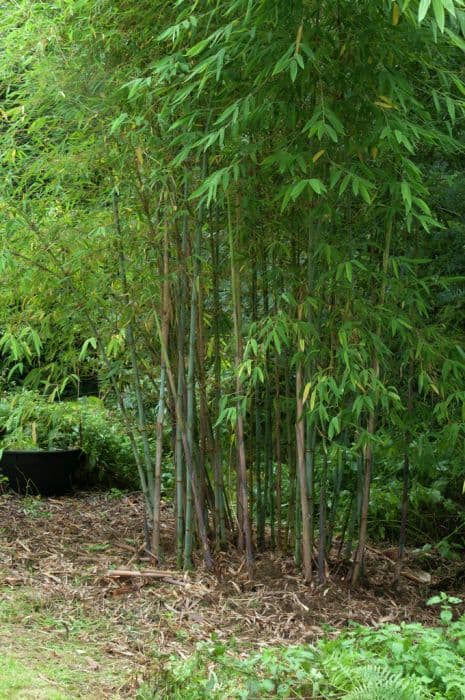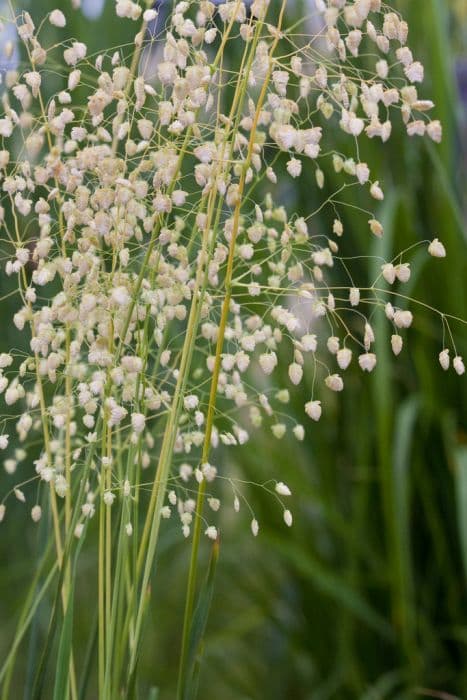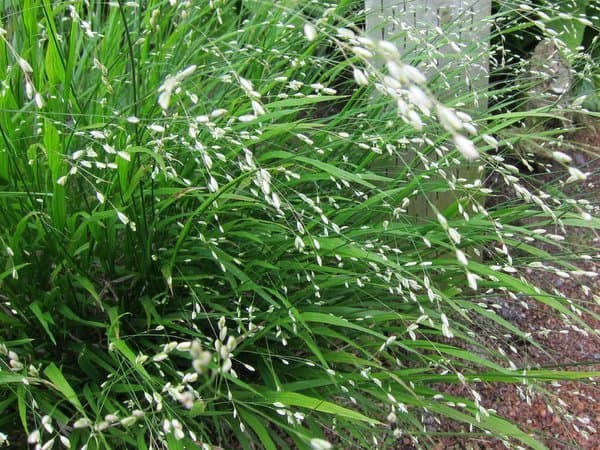Silver Feather Maiden Grass Miscanthus sinensis 'Silberfeder'




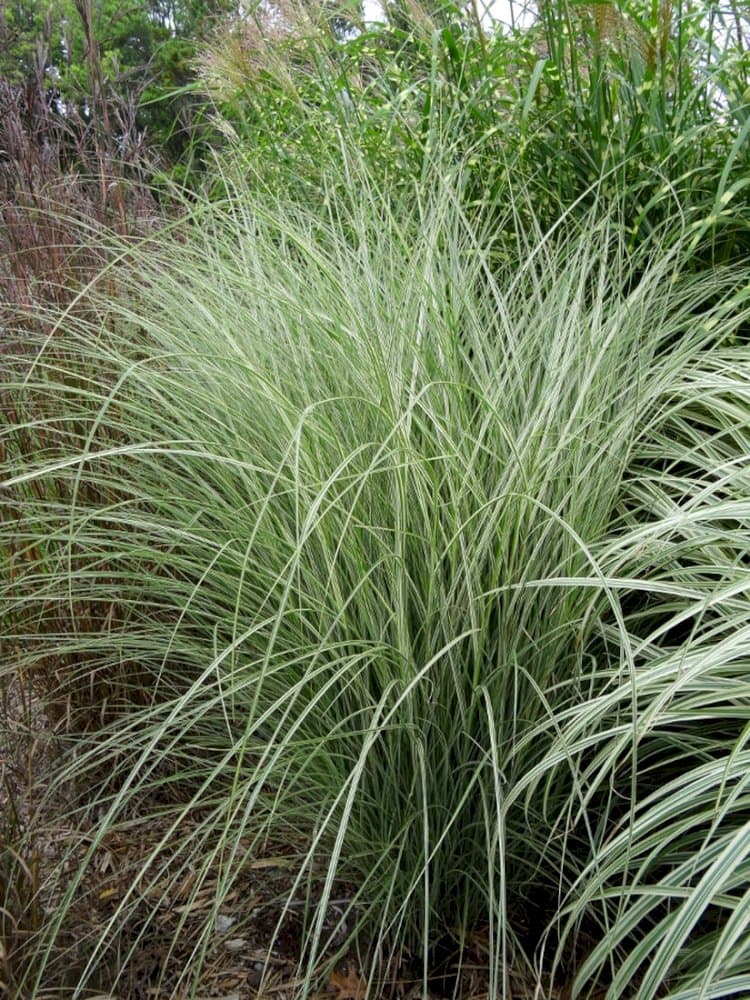
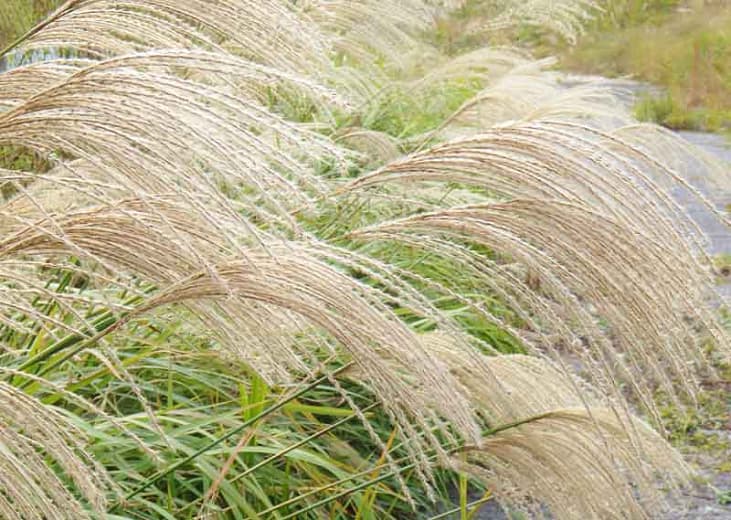

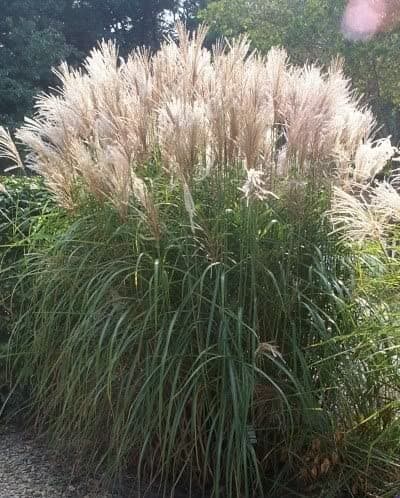
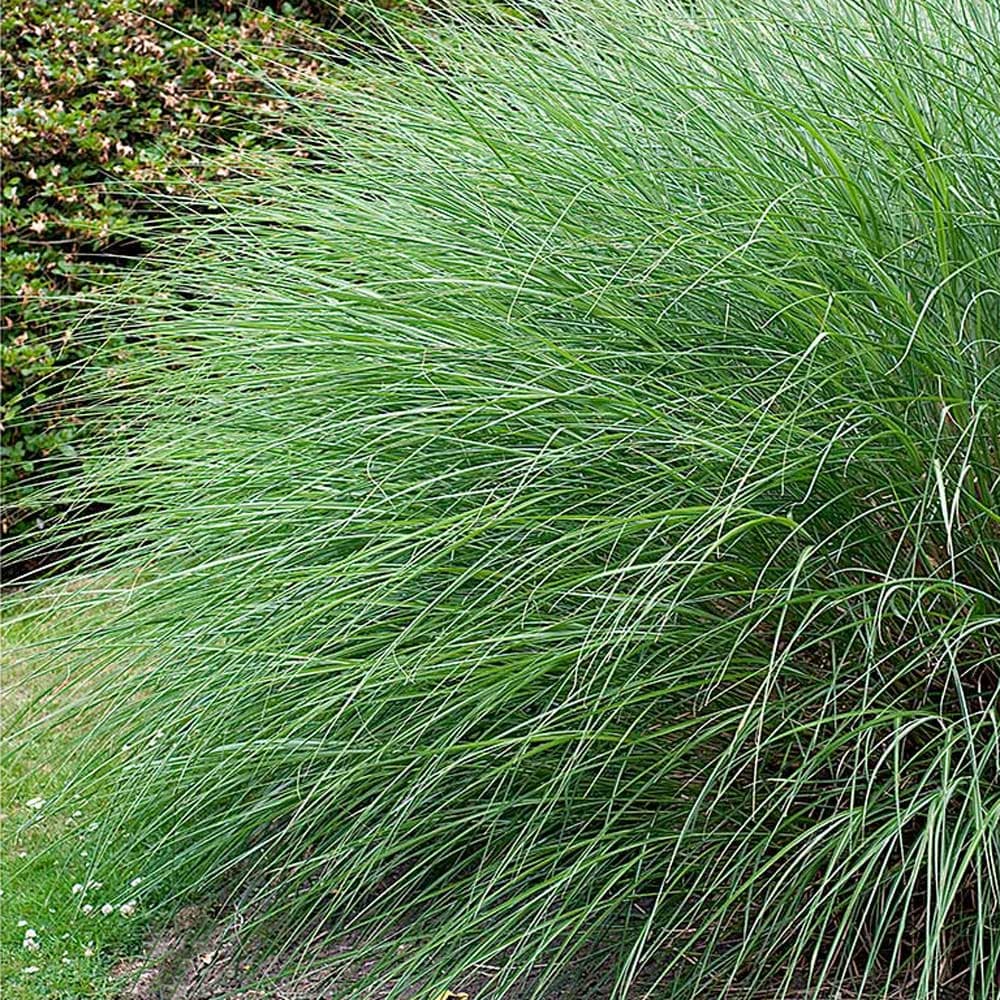
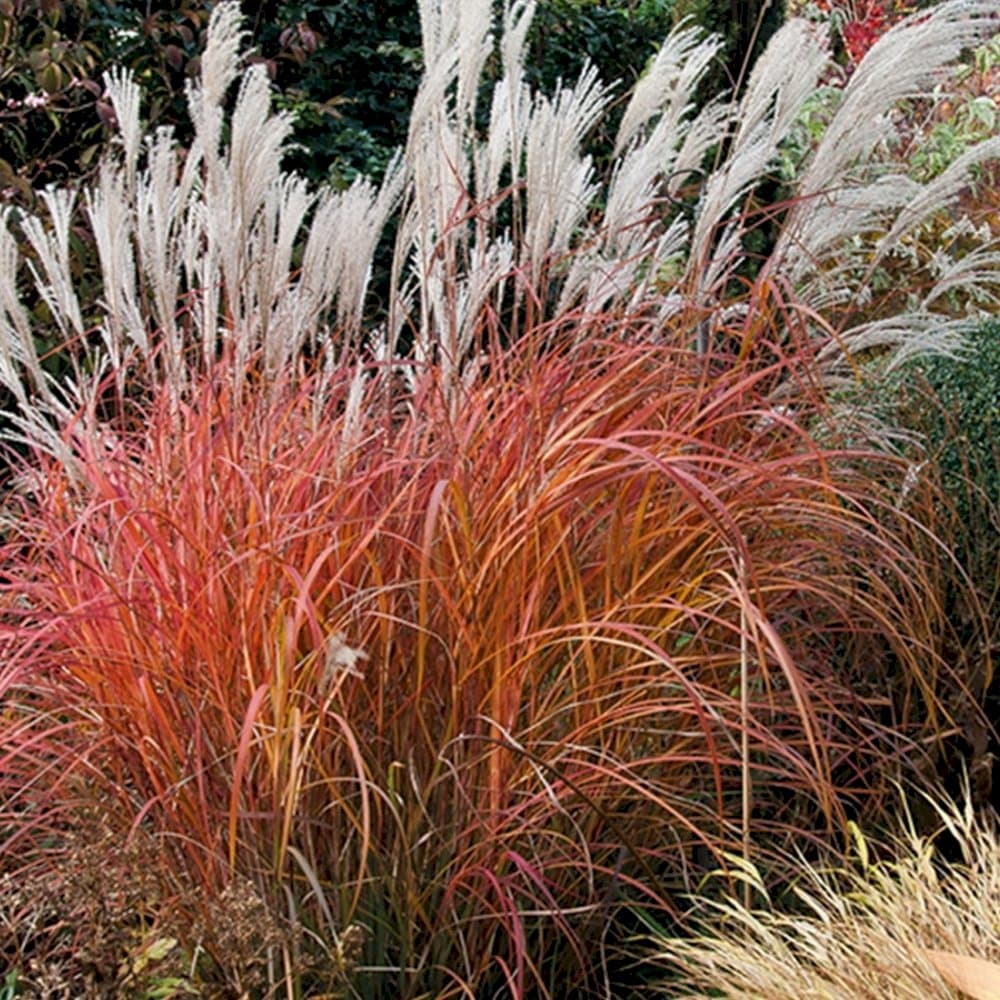
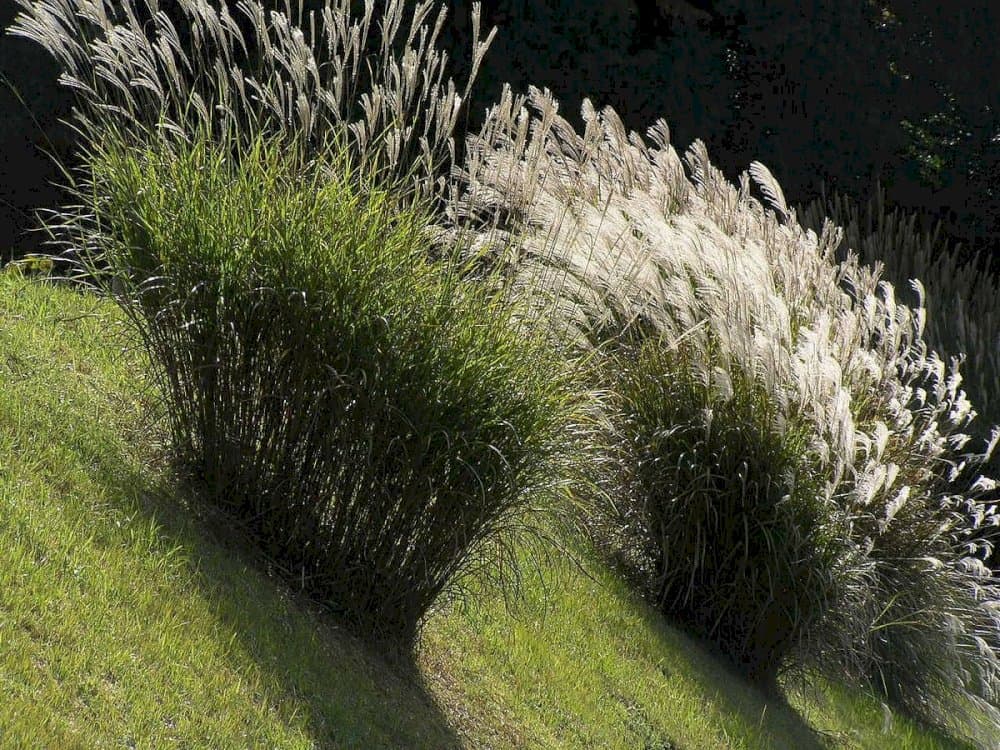
ABOUT
The plant known as 'Silver Feather' Maiden Grass, with a graceful and elegant structural appeal, is a perennial grass recognized for its distinctive foliage and attractive plumes. Its leaves are a rich green color and take on a narrow and elongated form, with sharp edges that resemble the blades of a sword. The foliage tends to arch gently, giving the plant a soft, flowing appearance that can add a sense of movement to the landscape. As the seasons change, this grass gives visual interest throughout the year. In the warmer months, the slender leaves sway in the breeze, capturing light and producing a shimmering effect. Come autumn, the leaves may transform into a golden hue, providing a warm, contrasting display as temperatures begin to drop. The crowning glory of 'Silver Feather' Maiden Grass are the feathery flower plumes it produces. These plumes are delicate and fluffy, appearing in an array of subtle silvery to pinkish tones. They emerge above the foliage, creating a cloud-like appearance that stands out in garden settings. The flowers can persist into the winter, adding a frosty texture to the garden when many other plants have faded. Overall, 'Silver Feather' Maiden Grass is prized for its fine-textured foliage and showy, graceful flower plumes, which add a soft, airy quality to the landscape. It is a popular choice for adding texture, movement, and seasonal color to gardens without consideration of its specific size.
About this plant
 Names
NamesFamily
Poaceae
Synonyms
Maiden Grass, Eulalia, Silver Feather, Chinese Silver Grass, Zebra Grass
Common names
Miscanthus sinensis var. condensatus 'Silberfeder', Miscanthus sinensis 'Silberfeder'
 Toxicity
ToxicityTo humans
Silver Feather Grass is not known to be toxic to humans. Therefore, ingesting parts of the plant typically does not lead to poisoning or adverse health effects. However, as with any plant material, individual allergies or sensitivities could cause mild irritation or discomfort.
To pets
Silver Feather Grass is not known to be toxic to pets. It is generally considered safe, and ingestion of parts of this grass should not cause poisoning in animals such as cats and dogs. However, ingestion of large amounts could potentially lead to gastrointestinal discomfort or blockages due to the plant's fibrous nature.
 Characteristics
CharacteristicsLife cycle
Perennials
Foliage type
Deciduous
Color of leaves
Green
Flower color
Silvery
Height
6-8 feet (1.8-2.4 meters)
Spread
3-5 feet (0.9-1.5 meters)
Plant type
Grass
Hardiness zones
5-9
Native area
Asia
Benefits
 General Benefits
General Benefits- Drought Tolerance: Miscanthus sinensis 'Silberfeder' is highly tolerant of drought conditions once established.
- Low Maintenance: It requires little care beyond initial planting and occasional trimming.
- Erosion Control: The dense root system helps to stabilize soil and prevent erosion.
- Wildlife Habitat: Provides shelter and nesting material for birds and other wildlife.
- Ornamental Value: Offers visual interest due to its tall, feathery plumes and year-round foliage presence.
- Privacy Screen: Can be used as a natural privacy screen or to block unsightly views when planted in rows or clusters.
- Winter Interest: The grass maintains its structure and provides landscape interest even during the winter months.
- Soil Improvement: Adds organic matter to the soil as it sheds leaves and stems, which decompose over time.
- Adaptability: Tolerant of a wide range of soil types and conditions, from clay to sandy soils.
- Variety of Uses: Suitable for mass plantings, borders, or as a stand-alone specimen in the garden.
 Medical Properties
Medical PropertiesThis plant is not used for medical purposes.
 Air-purifying Qualities
Air-purifying QualitiesThis plant is not specifically known for air purifying qualities.
 Other Uses
Other Uses- Miscanthus sinensis 'Silberfeder', commonly known as Silver Feather Grass, can be utilized as a natural fencing material when planted in dense rows, providing privacy and a sound barrier due to its tall and robust growth.
- The dried stalks of Silver Feather Grass are often used in floral arrangements and crafts for their texture and aesthetic appeal, lasting for several seasons without fading.
- This plant's extensive root system can be helpful in erosion control on slopes and banks, as it stabilizes the soil efficiently.
- It has potential as a biofuel source, with research suggesting it can be converted into ethanol or burnt directly for energy with a relatively high output and low input.
- The tall plumes and grass blades of Silver Feather Grass can be used in the fashion industry, particularly in creating eco-friendly textiles and woven accessories.
- It's used in landscape design as a seasonal indicator; its foliage changes color through the seasons, which can provide gardeners with a natural way to gauge the time of year.
- In permaculture systems, it acts as a windbreak to protect other plants and can help to create microclimates within the garden.
- The seeds of Silver Feather Grass are sometimes used in bird feed mixes to attract a variety of birds to the garden for bird-watching enthusiasts.
- It can be employed in the making of paper or cardboard as a sustainable fiber source, due to its high growth rate and renewable nature.
- Silver Feather Grass is sometimes used in sound insulation panels for its fibrous internal structure, which can help absorb and dampen sound.
Interesting Facts
 Feng Shui
Feng ShuiThe Maiden Grass is not used in Feng Shui practice.
 Zodiac Sign Compitability
Zodiac Sign CompitabilityThe Maiden Grass is not used in astrology practice.
 Plant Symbolism
Plant Symbolism- Resilience: Miscanthus sinensis 'Silberfeder', commonly known as Silver Feather Grass, is a robust plant that can thrive in a variety of conditions, symbolizing the ability to withstand adversity and bounce back from challenges.
- Adaptability: This plant is known for its ability to adapt to different environments, representing flexibility and the capacity to adjust to changing circumstances in life.
- Elegance: With its delicate feathery plumes, Silver Feather Grass is often associated with grace and elegance, evoking a sense of beauty and poise.
- Privacy and Boundaries: Often used in garden design to create natural borders, this plant can symbolize the importance of setting clear boundaries in life and maintaining personal space.
- Growth and Prosperity: Given its fast growth rate and lush appearance, Silver Feather Grass can represent growth and the flourishing of new ideas or phases in life.
 Water
WaterThe Maiden Grass should be watered thoroughly once a week, providing about 1 to 1.5 inches of water each time. During hot, dry spells, increase watering frequency to twice a week. Water the plant at its base, avoiding overhead watering to minimize the risk of fungal diseases. Make sure the soil is well-drained and the plant is not left in standing water. Adjust the watering schedule based on rainfall, as too much water can lead to root rot.
 Light
LightMaiden Grass thrives in full sun, requiring a minimum of 6 hours of direct sunlight each day. It is best positioned in a spot where it can receive unfiltered sunlight throughout the day. Partial shade is acceptable, but too much shade can hinder its growth and reduce the fullness of its foliage.
 Temperature
TemperatureMaiden Grass is hardy and can tolerate a wide range of temperatures, surviving in conditions from -20 to 90 degrees Fahrenheit. However, it grows best when nighttime temperatures are consistently above 50 degrees Fahrenheit. Avoid placing it in locations where temperatures drop below -20 degrees Fahrenheit to prevent cold damage.
 Pruning
PruningPrune Maiden Grass in late winter or early spring before new growth begins. This allows the plant to maintain its shape and encourages fresh, healthy growth. Cut back the foliage to about 4 to 6 inches from the ground. Pruning should be done annually to remove old growth and make room for new shoots.
 Cleaning
CleaningAs needed
 Soil
SoilMaiden Grass thrives in well-draining soil with a pH range of 5.5 to 7.5. A mix incorporating loamy soil with compost and peat moss promotes healthy growth. Fertile soil with consistent moisture yet not waterlogged is ideal.
 Repotting
RepottingMaiden Grass is typically not repotted as it is a large perennial grass. Instead, it's divided every few years in the garden to manage its size and spread.
 Humidity & Misting
Humidity & MistingMaiden Grass tolerates a wide range of humidity levels and does not require specific humidity conditions, making it versatile for various climates.
 Suitable locations
Suitable locationsIndoor
Grow in large containers with ample light.
Outdoor
Plant in full sun, space well, water deeply.
Hardiness zone
4-9 USDA
 Life cycle
Life cycleMiscanthus sinensis 'Silberfeder', commonly known as Silver Feather Maiden Grass, begins its life cycle as a hardy perennial rhizome that emerges in spring. The plant sends up shoots that quickly grow into tall, erect grass with fine-textured foliage. Throughout the summer, its foliage expands, forming dense clumps of arching leaves, leading up to late summer or early fall when it produces distinctive silver plume-like flowers that stand well above the foliage. As the season transitions into autumn, the flowers mature into a tan color, and the foliage turns into attractive shades of brown, offering winter interest in the landscape. During the winter, the grass remains dormant, with the dried foliage providing texture and shelter for wildlife. When spring returns, the cycle recommences with new growth that replaces the previous year’s foliage, which can be cut back to make way for fresh shoots.
 Propogation
PropogationPropogation time
Early Spring
The most popular method of propagating Miscanthus sinensis 'Silberfeder', commonly known as Silver Feather Maiden Grass, is through division. Typically, this is done in the spring as new growth becomes apparent. To propagate by division, a gardener should dig up the entire plant, making sure to keep a generous amount of roots intact. The clump should then be carefully separated into smaller sections, each with adequate roots and shoots. These divisions can be immediately replanted in soil with good drainage, spacing them out to allow for growth. Keep the divisions well-watered while they establish in their new locations. This straightforward method helps maintain the health and vigor of the parent plant while increasing the number of Silver Feather Maiden Grass plants in the garden.
